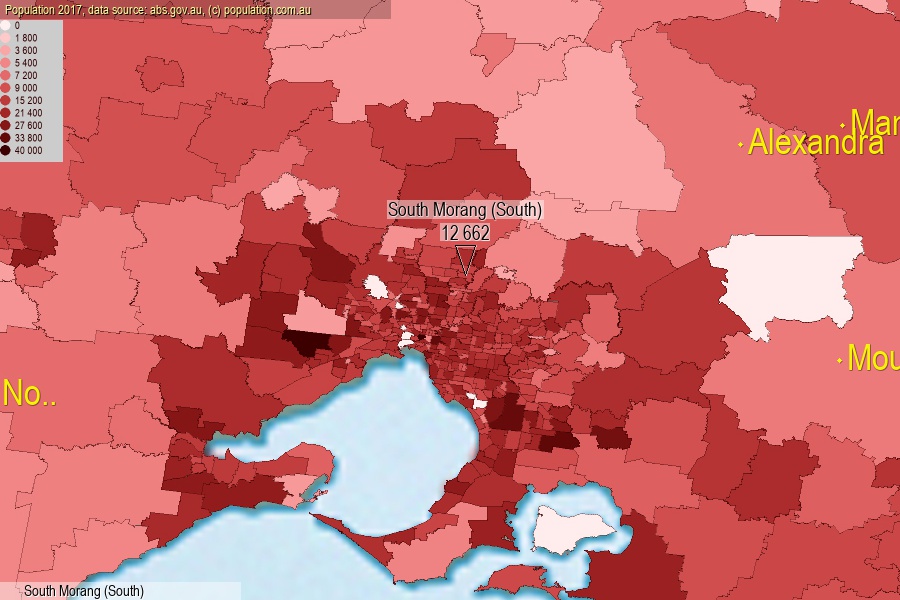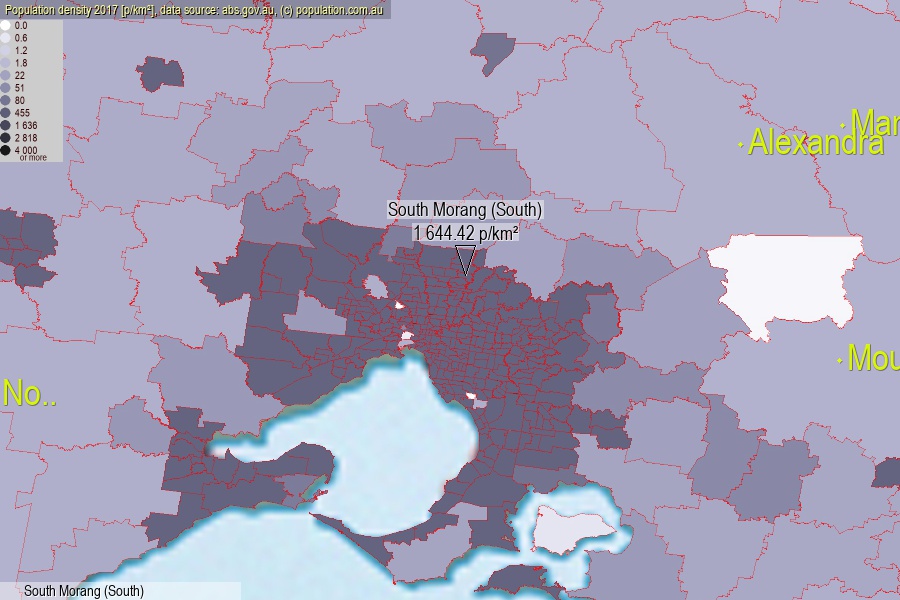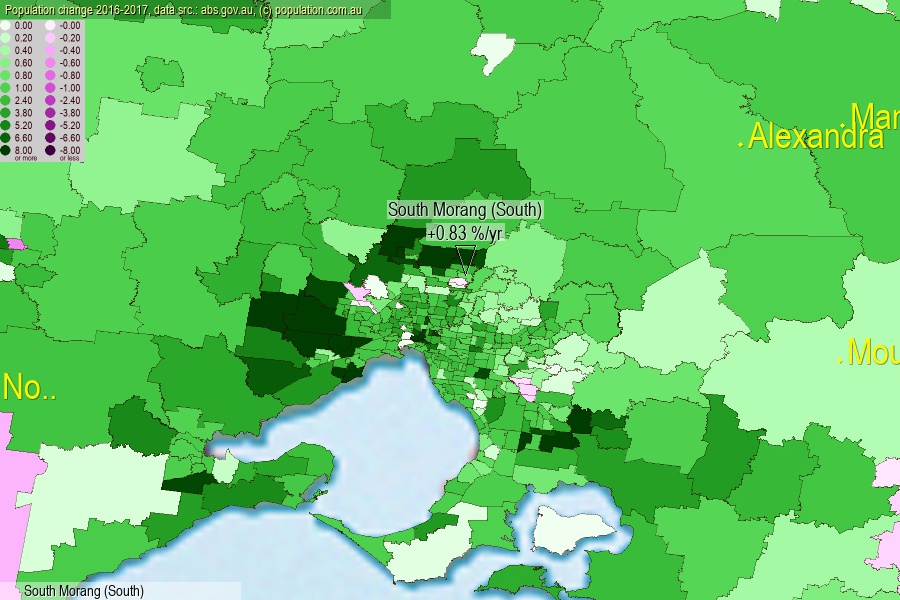 population.com.au
population.com.auLast official estimated population of South Morang (South) (as Statistical Area Level 2) was 12 662 people (on 2017-06-30)[2]. This was 0.05% of total Australian population and 0.197% of VIC population. Area of South Morang (South) is 7.70 km², in this year population density was 1 644.42 p/km² . If population growth rate would be same as in period 2016-2017 (+0.83%/yr), South Morang (South) population in 2025 would be 13 526. [0]



Click to enlarge. South Morang (South) is located in the center of the images.
Population [people], population density [p./km²] and population change [%/year] [2]
View borders » (new window) [4]
[2001-2002] +20.04 %/Yr.
[2002-2003] +16.70 %/Yr.
[2003-2004] +11.12 %/Yr.
[2004-2005] +5.71 %/Yr.
[2005-2006] +6.15 %/Yr.
[2006-2007] +6.12 %/Yr.
[2007-2008] +9.83 %/Yr.
[2008-2009] +7.62 %/Yr.
[2009-2010] +7.83 %/Yr.
[2010-2011] +4.11 %/Yr.
[2011-2012] +1.85 %/Yr.
[2012-2013] +1.40 %/Yr.
[2013-2014] +1.01 %/Yr.
[2014-2015] +0.79 %/Yr.
[2015-2016] +0.85 %/Yr.
[2016-2017] +0.83 %/Yr.
[0] Calculated with linear interpolation from officially estimated population
[1] Read more about SA2 and Australian Statistical Geography Standard (ASGS) on abs.gov.au
[2] Population data from Australian Bureau of Statistics (Population and density: 2017; change: 2016-2017)
[3] Digital Boundaries: Australian Statistical Geography Standard (ASGS) 2016.
[4] Border coordinates are simplifyed using Ramer-Douglas-Peucker algorithm.